This is the Trumpeter 01587 kit in 1/35 scale, of the ‘Krupp/Ardelt Waffentrager 88mm PaK 43’.

This is the Trumpeter 01587 kit in 1/35 scale, of the ‘Krupp/Ardelt Waffentrager 88mm PaK 43’.

This is the Tamiya 35292-3200 kit in 1/35 scale, of the ‘German Panzerkampfwagen II Ausf. A/B/C (French Campaign)’.
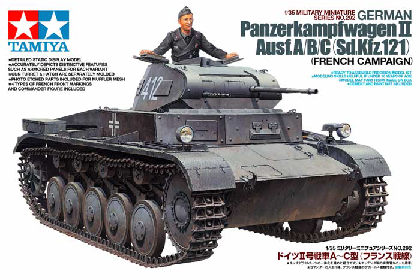
This is the Tamiya 35020-2200 kit in 1/35 scale, of the ‘German Hanomag Sd.Kfz.251/1’.
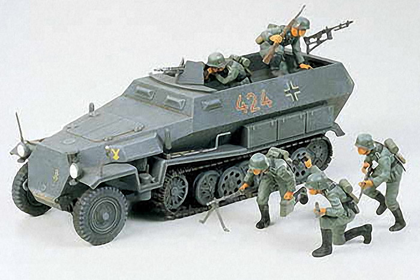
This is the Tamiya 35 376-3800 kit in 1/35 scale, of the ‘American Tank Destroyer M18 Hellcat’.
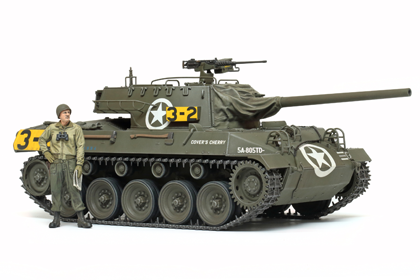
The M18 Hellcat was an American tank destroyer developed to counter the German Army tanks, and it featured an open top design turret and powerful 76mm gun, plus a main gun breech rotated 45 degrees around the gun barrel to save space in the turret interior.
It had a compact, lightweight hull, automatic transmission and the first torsion bar suspension seen on U.S. armor. Its radial 9-cylinder engine at the hull rear was capable of 80 km/h maximum speed which was the highest speed among tracked vehicles during WWII.
The production started in July, 1943 and the Hellcat was in service for the first time at the Italian Front in 1944. After that, this tank destroyer was deployed in the North-Western European and Pacific War theaters, notably besting the German Army tanks with super performance and firepower based on hit-and-run tactics. The Hellcat contributed to U.S. victory as a pioneer of tank destroyers.
Source: Tamiya website
This is the Tamiya 35 260-4400 kit in 1/35 scale, of the ‘JGSDF Type 90 Tank w/ammo-loading crew’.
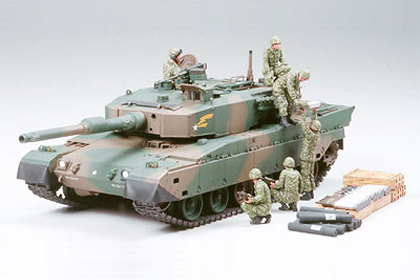
The Type 90 mounts a licensed copy of the German Rheinmetall L44 120mm smoothbore cannon product by Japan Steel Works Limited. This is the same gun that is mounted on the German Leopard 2, American Abrams, and the South Korean K1A1 tanks. The gun is armed and loaded through a mechanical bustle autoloader (conveyor-belt type), developed by Mitsubishi of Japan.
The Type 90 tank is the first western tank to achieve manpower savings by reducing the crew to three through the development of the turret bustle autoloader (with the exception of the turretless Strv 103). This design allows the tank crew to operate without a loader, which allows the use of a smaller turret.
This is the Tamiya 35 290-3600 kit in 1/35 scale, of the ‘German Panzerkampfwagen III, Ausf. N’.

From June 1942 through to August 1943, existing J, L, & M models also received these upgrades and 663 tanks were fitted, and another 37 were also upgraded later in 1944. In the summer of 1942 these tanks appeared on the battlefield with their highly explosive shells, and they proved to be highly efficient in their role of reinforcing the ground troops.
They were deployed into newly organized heavy tank battalions, to make up for the lack of Tiger I tanks. As a support tank, the N type was easy to manage and very reliable, and in the latter half of WWII it fought at many fronts.
This is the Tamiya 35 026-500 kit in 1/35 scale, of the ‘German Jerry Can set’.
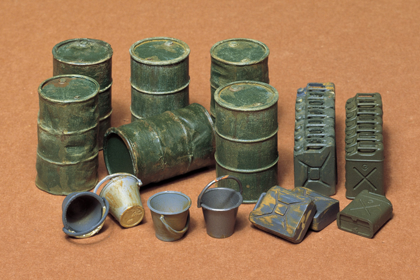
This is the Tamiya 35327-3800 kit in 1/35 scale, of the ‘Russian BT-7, Model 1937’.
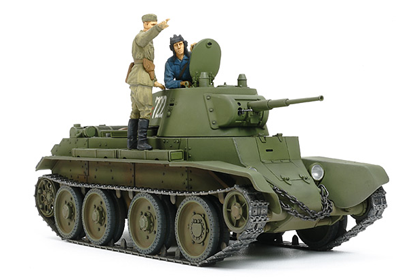
An Important Step in Russian Tank Evolution – The BT-7 was a highly-maneuverable tank with a powerful 45mm main gun in addition to sloped front armor, which made it the pillar of the Russian tank divisions.
The 1937 model was a defensive upgrade to its predecessors, featuring as it did sloped armor all around the body in place of the previous flat version.
This design proved to be successful enough for use in its successor, the T-34.
This is the Tamiya 35 229 kit in 1/35 scale, of the ‘Allied Vehicle Accessory set’.
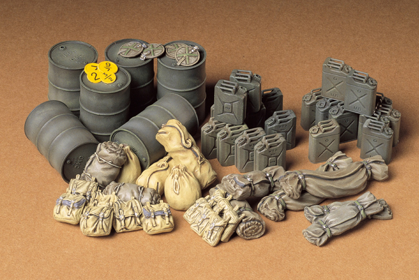
This is the Tamiya 35 350-3800 kit in 1/35 scale, of the ‘US M10 Tank Destroyer (Mid production)’.
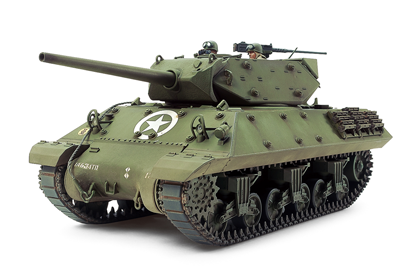
It utilized the successful M4A2 Sherman chassis with diesel powerplant, and mounted the 76.2mm gun in an open-top rotating turret; the hull featured extensive use of sloped armor, kept thin so as not to hinder maneuverability. Bosses were used on the turret and hull to facilitate the affixation of additional armor.
Around 5,000 M10s were manufactured between September 1942 and December 1943, and it featured in action across North Africa and western Europe, its 3-inch gun and excellent maneuverability making it an asset for Allied forces.
This is the Tamiya 35 315 kit in 1/35 scale, of the ‘German Jerry Can set (Early type)’.
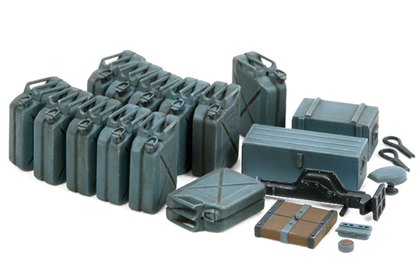
Early-type cans were seen from the Polish campaign to North Africa and the beginning of the Russian campaign, and some were continuously used until the latter half of the war.
This is the Tamiya 35 158-3400 kit in 1/35 scale, of the ‘US M1A1 Abrams w/ Mine Plow’.
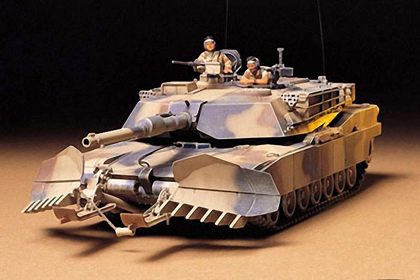
The hull sides and rear panels are vertical, with only the front angled to deflect anti-tank shots. The 1500 horsepower Avco-Lycoming AGT-1500 turbine engine provides remarkable speed and maneuverability plus being regarded as one of the quietest tank powerplants available today. During the mid 1980’s the M1 underwent an improvement program to upgrade its 105mm gun to the type M256 120mm smoothbore cannon.
The armor at the frontal area of the lower hull front and turret was also increased, and it was given the new designation of “M 1A1”. Other improvements are seen in the enlarged rear turret bustle stowage rack, a new style crosswind sensor, a revised gunner’s sightmount, plus reinforced suspension and transmission unit.
One of the more specialized pieces of equipment utilized on this tank is a detachable plow for uncovering and neutralizing mine fields. Land mines are a menacing problem for both humans and vehicles during any conflict, and the operations of this specialized M1A1 helped clear the way for troops following the tanks during the recent Gulf conflict.